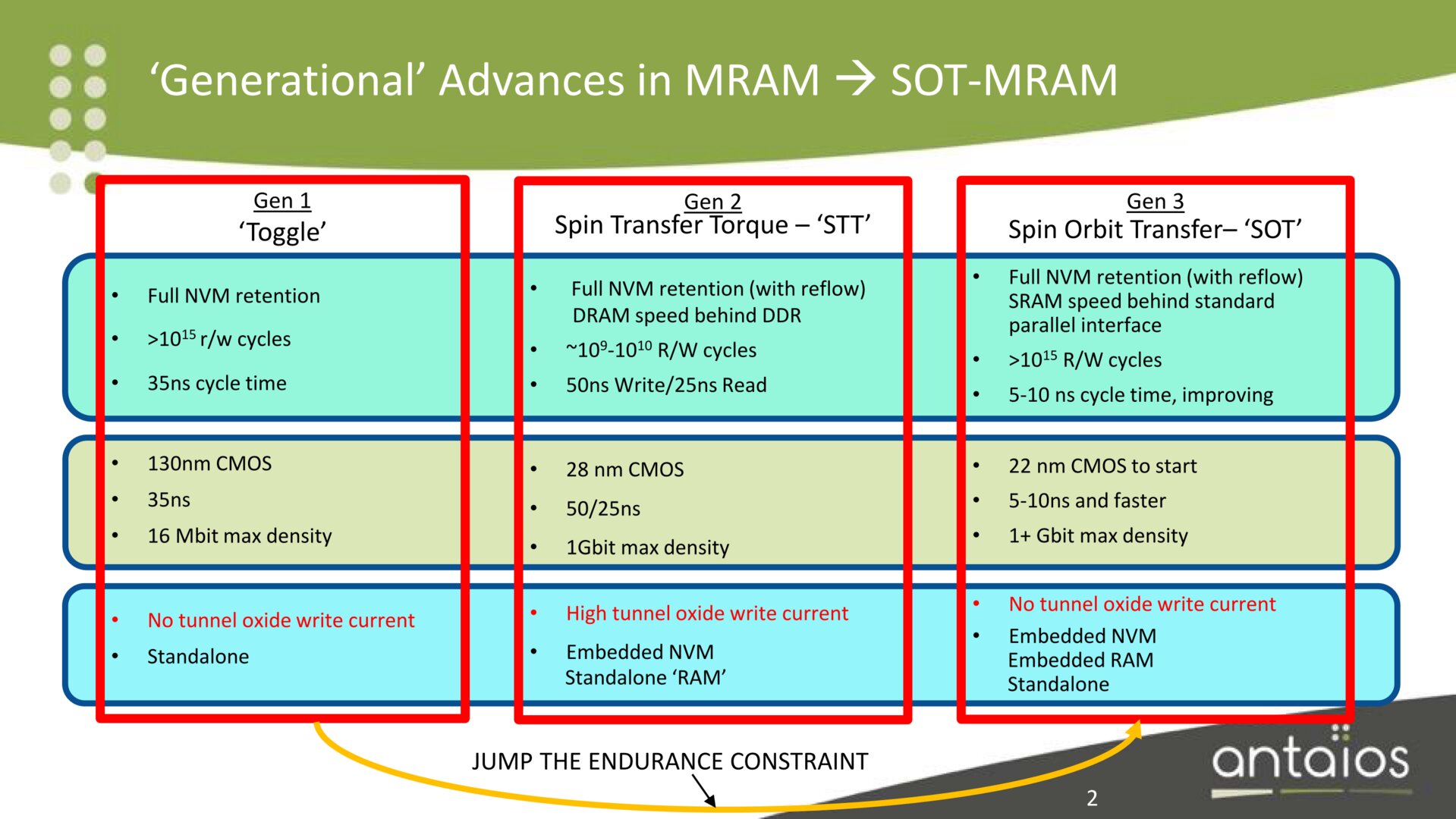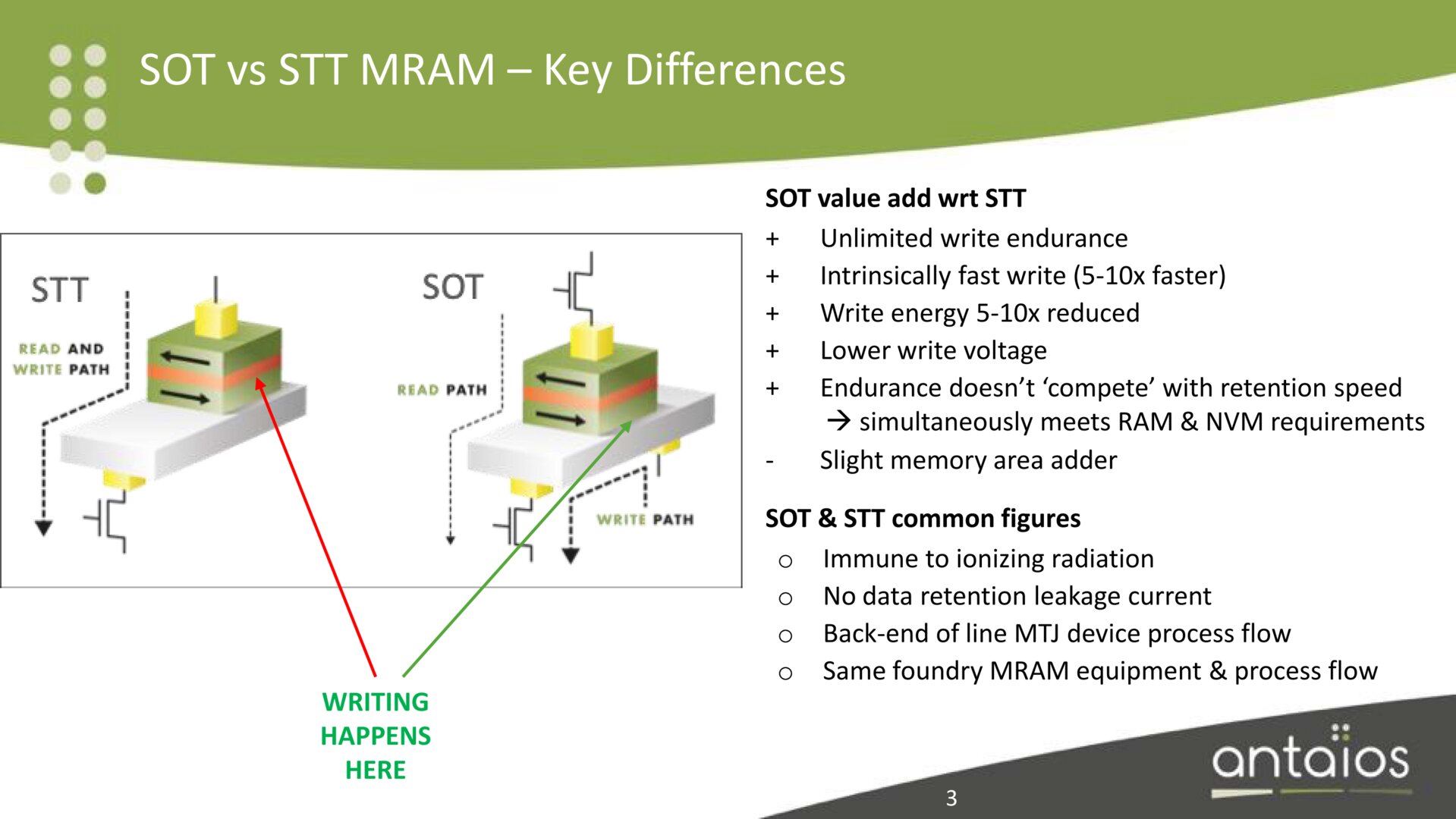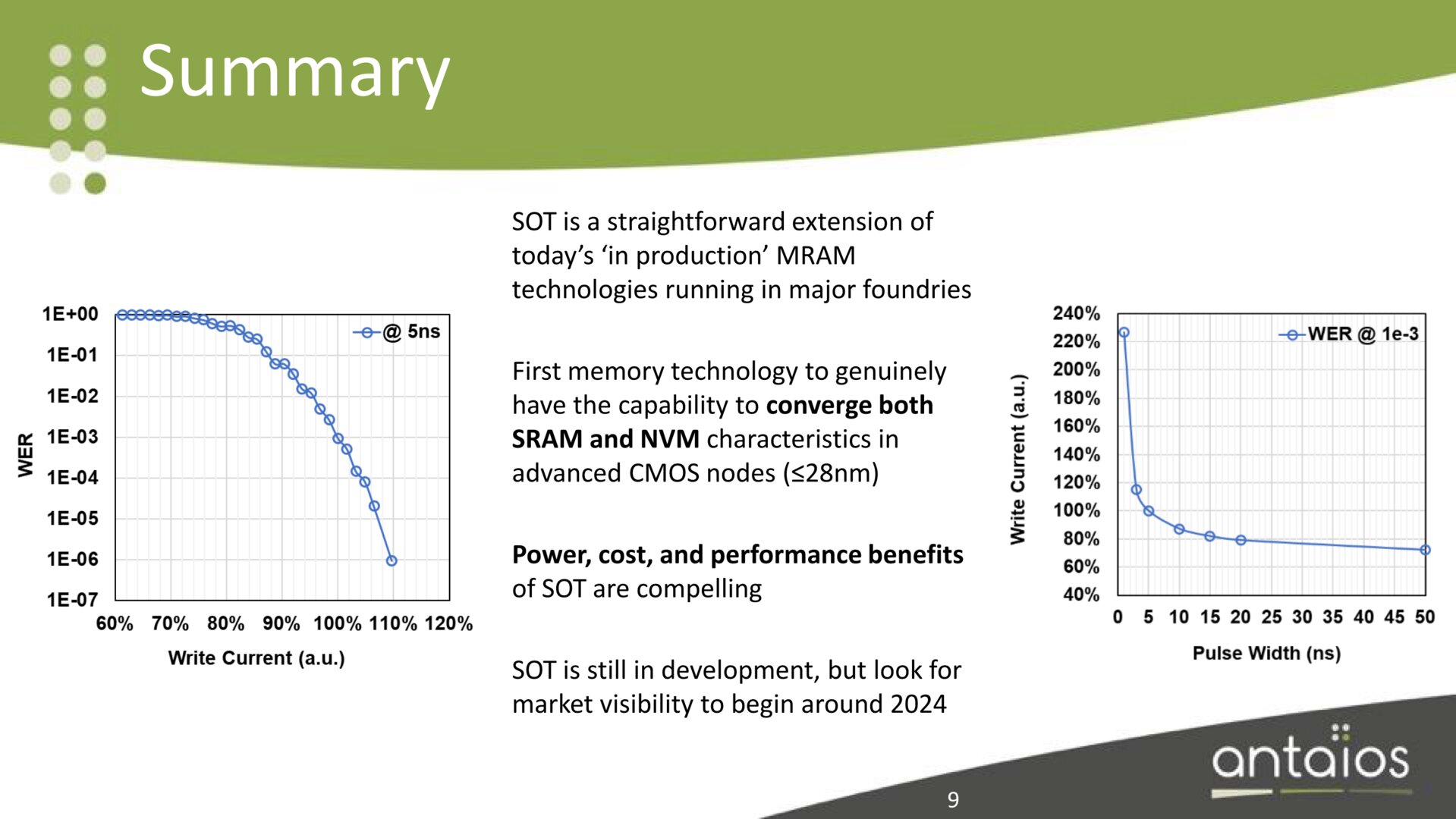With the non-volatile storage technology Magnetoresistive Random Access Memory (MRAM), the further development Spin Orbit Transfer (SOT-MRAM) should offer more power and a higher storage density than the available STT-MRAM. But for the time being it remains with the theory, because products with SOT-MRAM are not expected before 2024.
STT-MRAM (Spin Transfer Torque) is currently the measure of all things and is used commercially in various areas such as aerospace. The leading manufacturer Everspin has been offering STT MRAM chips with 1 Gbit in 28 nm for around two years, which are used, for example, as a DRAM or SRAM replacement and, compared to these volatile memories, offer the advantage of data retention without power supply. Due to the still low storage density (NAND flash already reaches over 1 terabit), MRAM is not yet a candidate for mass storage.
SOT-MRAM is faster than STT-MRAM
At the Hot Chips 33 symposium, Barry Hoberman and Jean-Pierre Nozieres from Antaios spoke about the possibilities of SOT-MRAM as a potential successor to STT-MRAM. The French company describes itself as a SOT MRAM pioneer and secured US $ 11 million in investor support last year.
While STT-MRAM achieves latencies of around 50 nanoseconds (ns) when writing and 25 ns when reading, SOT-MRAM should act significantly faster with 5-10 ns and therefore be even better positioned, especially when it comes to SRAM replacement in processors. In the currently targeted 22-nm CMOS production, SOT-MRAM should also achieve a storage density of over 1 Gbit. In a finer process, however, higher storage densities would also be conceivable for STT-MRAM.
Another advantage over STT-MRAM is the lower energy requirement: Writing should not only be 5 to 10 times faster, but also need 5 to 10 times less energy. The shelf life is classified as “unlimited” by Antaios with 1015 R/W cycles and should also exceed STT-MRAM.
Marketable from 2024 expected
But there is still a long way to go before SOT-MRAM is used, for example, in microcontrollers, as a CPU cache and in AI applications, as the company intends. Although production requires conditions similar to those for STT-MRAM, it will take until 2024 for SOT-MRAM to reach the market, according to Antaios' prognosis. In line with this, a spokesman for MRAM competitor Everspin declared in 2019 that SOT-MRAM would not gain any importance in the next five years.
-
 Presentation of SOT-MRAM for Hot Chips 33 (Image: Antaios)
Presentation of SOT-MRAM for Hot Chips 33 (Image: Antaios)
Image 1 of 10
 Presentation on SOT-MRAM for Hot Chips 33
Presentation on SOT-MRAM for Hot Chips 33  Presentation on SOT-MRAM for Hot Chips 33
Presentation on SOT-MRAM for Hot Chips 33  Presentation on SOT-MRAM for Hot Chips 33
Presentation on SOT-MRAM for Hot Chips 33  Presentation on SOT-MRAM for Hot Chips 33
Presentation on SOT-MRAM for Hot Chips 33 < figure>  Presentation on SOT-MRAM for Hot Chips 33
Presentation on SOT-MRAM for Hot Chips 33
 Presentation on SOT-MRAM for Hot Chips 33
Presentation on SOT-MRAM for Hot Chips 33  Presentation on SOT-MRAM for Hot Chips 33
Presentation on SOT-MRAM for Hot Chips 33  Presentation to SOT-MRAM to Hot Chips 33
Presentation to SOT-MRAM to Hot Chips 33